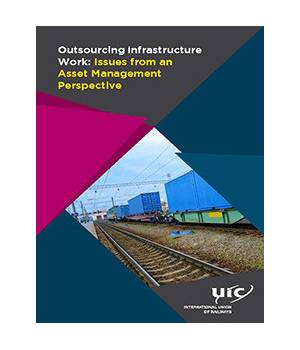
Outsourcing Infrastructure Work: Issues from an Asset Management Perspective
Outsourcing is the process of finding, agreeing terms and acquiring goods, services or works from an external source, often via a tendering or competitive bidding process. The process is used to ensure the buyer receives goods, services or works at the best value for money over the lifecycle of the investment, when aspects such as quality, quantity, time and location are compared.
Any such can be described with the following steps:
- Identification of need and requirements analysis
- External macro-level market analysis
- Cost analysis
- Supplier identification
- (Non-disclosure agreement)
- Supplier communication
- Negotiations and contracting
- Logistics and performance management
- Supplier management and liaison
The UIC Railway Application Guide of ISO 55001 [1] provides practical guidance for railway Infrastructure Managers (IM) who wish to improve their Asset Management (AM) capability. AM is fundamentally about achieving an appropriate balance of asset cost, risk and performance to meet organization objectives and deliver value from the assets. This framework shows that outsourcing is a part or an option of the overall AM process and needs to be carefully considered.
| Author | UIC |
| ISBN | 978-2-7461-2751-7 |
| Pages | 40 |
Data sheet
- Language
- English
- Format
- Downloadable
- Edition
- Ed. no.1
- Edition date
- 01/02/2019
- Publication date
- 31/03/2020
- Page number
- 40
- Theme
- High speed Grande Vitesse Infrastructure Infrastructure
- sku
- 1-19008E-PDF
- Reference
- 1-19008E
 Cookie preferences
Cookie preferences

